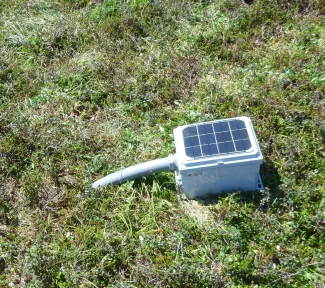Permafrost temperatures are increasing in Alaska due to climate change and in some cases permafrost is thawing and degrading. In areas where degradation has already occurred the effects can be dramatic, resulting in changing ecosystems, carbon release, and damage to infrastructure. However, as emphasized by Bill Cable from the University of Alaska Fairbanks and his colleagues, in many areas we lack baseline data, such as subsurface temperatures, needed to assess future changes and potential risk areas. Besides climate, the physical properties of the vegetation cover and subsurface material have a major influence on the thermal state of permafrost. These properties are often directly related to the type of ecosystem overlaying permafrost. In this article just published in The Cryosphere, Cable and others demonstrate that classifying the landscape into general ecotypes is an effective way to scale up permafrost thermal data collected from field monitoring sites. Additionally, they find that within some ecotypes the absence of a moss layer is indicative of the absence of near-surface permafrost. As a proof of concept, these NGEE Arctic researchers used ground temperature data collected from the field sites to recode an ecotype land cover map into a map of mean annual ground temperature ranges at 1 m depth based on analysis and clustering of observed thermal regimes. The approach was successful and is now being extended to the Seward Peninsula based on instrument stations deployed at field sites outside Nome. According to Cable, the map should be useful for decision making with respect to land use and understanding how the landscape might change under future climate scenarios.
Reference: Cable WL, VE Romanovsky, and MT Jorgenson. 2016. Scaling-up permafrost thermal measurements in western Alaska using an ecotype approach, The Cryosphere 10: 2517-2532. http://dx.doi.org/10.5194/tc-10-2517-2016
[[{"fid":"233","view_mode":"default","type":"media","link_text":null,"fields":{},"attributes":{"height":"1266","width":"1431","style":"width: 800px; height: 708px;","class":"media-element file-default"}}]]
Figure 3. Custom-made temperature monitoring stations measure the thermal regime of active layer and permafrost soils at NGEE Arctic field sites along the Teller, Kougarok, and Council Roads. Solar panels ensure that batteries remain changed throughout the season.
For more information, please contact:
William Cable


